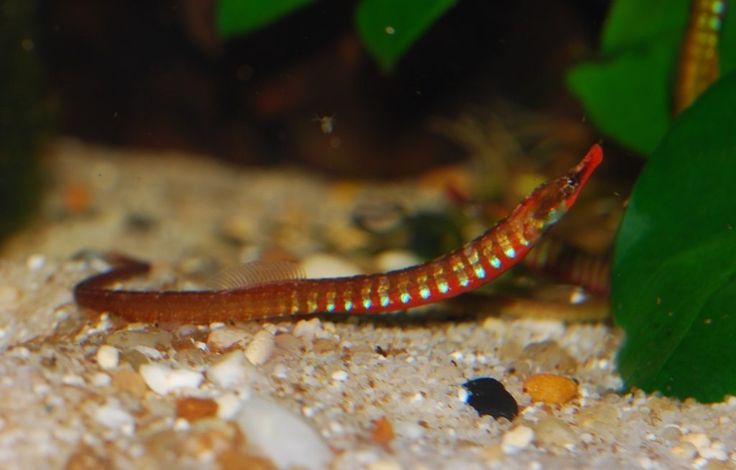African Pipefish
African Pipefish
check_circle Fast Shipping
check_circle Quality Products
check_circle Affordable Price
Reach out to us on ''available to order'' items via WhatsApp or email
15 in stock
Couldn't load pickup availability

African Pipefish
package_2
Product Description
Product Description
African Pipefish
Description & Care (Bullet Form)
Description
-
Slender, elongated body resembling a freshwater seahorse, with tubular snout and small mouth.
-
Typically brown, olive, or mottled to blend with aquatic plants and leaf litter.
-
Can reach around 15–20 cm depending on species (commonly Enneacampus kaupi).
-
Slow-moving, peaceful, and highly specialized micro-predators.
-
Males carry and protect eggs in a brood pouch under the belly.
Tank Requirements
-
Minimum tank size: 60 L+ for a pair or small group; long, shallow tanks preferred.
-
Very gentle flow; calm water to allow easy feeding and swimming.
-
Soft, slightly acidic to neutral water: pH 6.5–7.5.
-
Temperature: 22–26 °C depending on species (African freshwater pipefish prefer cooler side).
-
Clean, pristine water with stable parameters—sensitive to ammonia and nitrite.
-
Good filtration but avoid strong current; sponge filters ideal.
Aquascaping
-
Densely planted tank with fine-leaf plants (Java moss, hornwort, vallisneria).
-
Add hiding places: driftwood, tall grass-like plants, leaf litter.
-
Dim to moderate lighting.
Diet & Feeding
-
Specialized live-food feeder; will rarely accept dry or frozen foods.
-
Feed live baby brine shrimp, daphnia, cyclops, mosquito larvae, copepods, and micro-worms.
-
Small frequent feedings (2–3 times daily) due to slow metabolism.
-
Needs thriving live food cultures or established micro-life in tank.
Compatibility
-
Very peaceful and slow—best kept in species-only tank.
-
Avoid active or aggressive tankmates (tetras, barbs, cichlids, guppies).
-
Good companions: small shrimp, snails, and very calm fish like ricefish or endlers (cautiously).
Breeding
-
Male carries eggs in belly pouch—breeding possible in quiet, food-rich tanks.
-
Babies very small; need infusoria, microworms, and live copepods.
Challenges
-
Sensitive to stress, strong flow, and poor water conditions.
-
Feeding can be difficult; needs live food supply.
-
Not suitable for beginners—requires experience with delicate species.
Key Selling Points (for store/ad)
-
Rare and exotic freshwater relative of seahorses.
-
Graceful, fascinating behavior—amazing for biologically rich, planted setups.
-
Ideal for unique display tanks and advanced aquarists.


